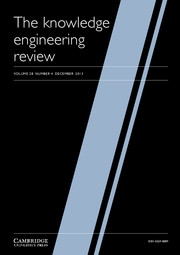Article contents
An ontologically-based evaluation of software design methods
Published online by Cambridge University Press: 01 March 2009
Abstract
This paper develops an ontological basis for evaluating software design methods, based on the situated function–behaviour–structure framework. This framework accounts for the situatedness of designing, viewing it as a dynamic activity driven by interactions between designers and the artefacts being designed. On the basis of this framework, we derive a general evaluation schema that we apply to five software design methods. The ideas presented in this work contribute to a better understanding of design methods, and uncover opportunities for method integration and development.
Information
- Type
- Article
- Information
- The Knowledge Engineering Review , Volume 24 , Special Issue 1: Software and system engineering – part 1 , March 2009 , pp. 41 - 58
- Copyright
- Copyright © Cambridge University Press 2009
References
- 3
- Cited by

